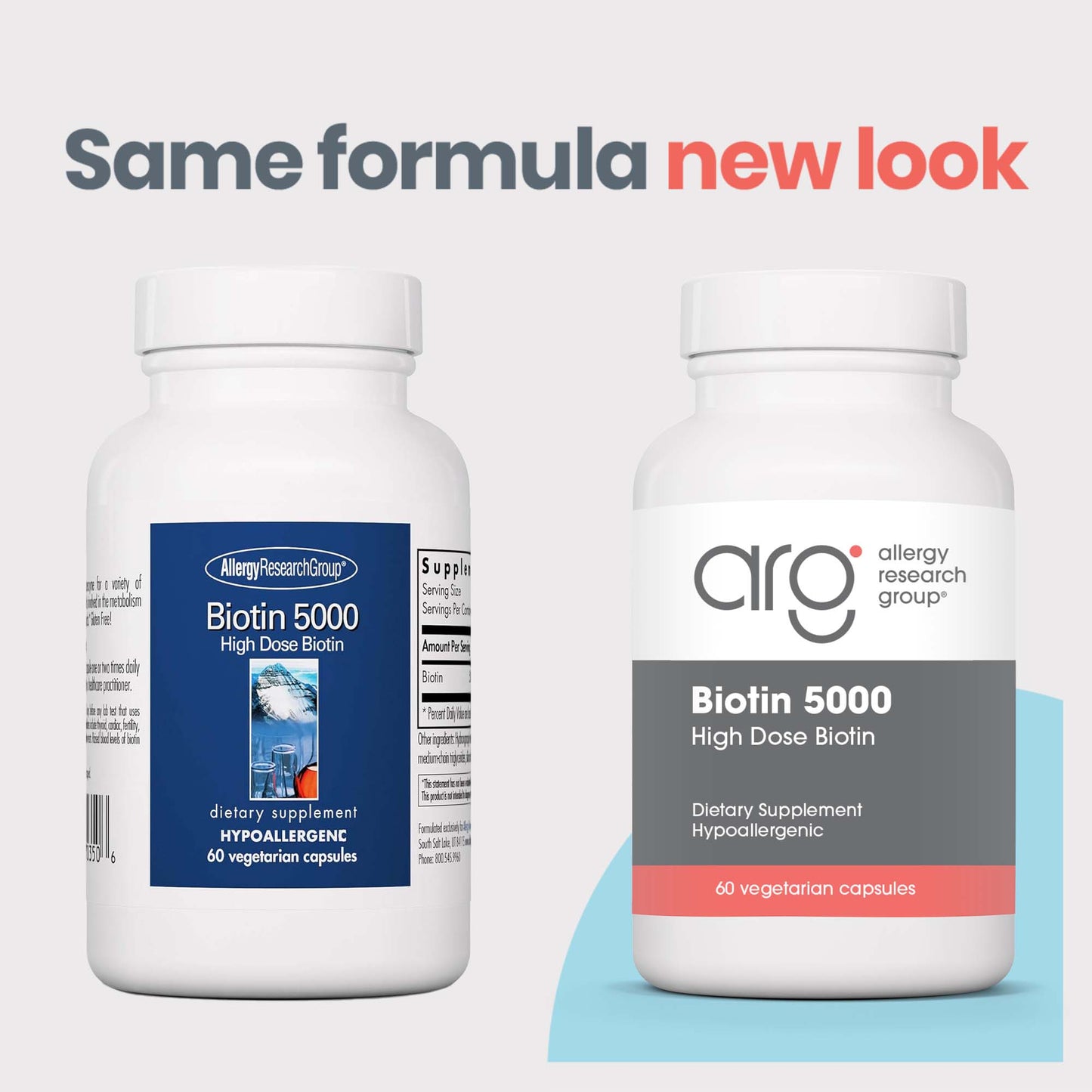Foundational Support for Energy Metabolism, Blood Sugar Balance, and Healthy Hair, Skin, and Nails*
What It Does
Biotin 5000 provides 5000 mcg (5 mg) of biotin per capsule to support energy production, macronutrient metabolism, and the structural integrity of skin, hair, and nails.* As a vital coenzyme for multiple carboxylation reactions, biotin plays a central role in maintaining mitochondrial energy, blood glucose regulation within normal limits, and healthy protein turnover.*
How It Works
• Biotin (5 mg): Delivers a potent, bioavailable dose of vitamin B7 to support metabolic, dermatological, and structural health.*
• Energy Metabolism: As a coenzyme in the citric acid cycle, biotin helps convert pyruvate to oxaloacetate and supports ATP production in high-demand tissues such as muscle and brain.*[3]
• Fatty Acid & Glucose Metabolism: Supports the activity of carboxylase enzymes involved in fatty acid synthesis and gluconeogenesis, aiding energy homeostasis and fasting adaptation.*[2-3]
• Protein Synthesis & Muscle Health: Biotin supports branched-chain amino acid metabolism (leucine, isoleucine, valine), essential for muscle recovery and immune function.*[2]
• Blood Sugar & Lipid Balance: In clinical trials, higher-dose biotin supplementation has shown benefits for supporting healthy glucose and lipids within normal limits.*[4-5]
• Skin, Hair & Nail Health: Biotin is involved in keratin production, the structural protein essential for resilient skin, thick hair, and strong nails.*[6]
Who It’s For
Biotin 5000 is recommended for individuals seeking foundational metabolic support, those with goals related to metabolism or those with an interest in skin, hair, and nail health.*
Special Features
Each gluten-free capsule provides a consistent 5000 mcg dose, suitable for long-term daily use and consistent with doses shown in clinical trials to support metabolic and structural health.*
References
1. Gravel RA, Narang MA. J Nutr Biochem. 2005;16(7):428–31. doi:10.1016/j.jnutbio.2005.03.020
2. León‐Del‐Río A. J Inherit Metab Dis. 2019;42(4):647–54. doi:10.1002/jimd.12073
3. Sakurai-Yageta M, Suzuki Y. Nutrients. 2024;16(15):2444. doi:10.3390/nu16152444
4. Zhang Y, et al. Front Nutr. 2022;9. doi:10.3389/fnut.2022.1046800
5. Singer GM, Geohas J. Diabetes Technol Ther. 2006;8(6):636–43. doi:10.1089/dia.2006.8.636
6. Patel DP, et al. Skin Appendage Disord. 2017;3(3):166–69. doi:10.1159/000462981





